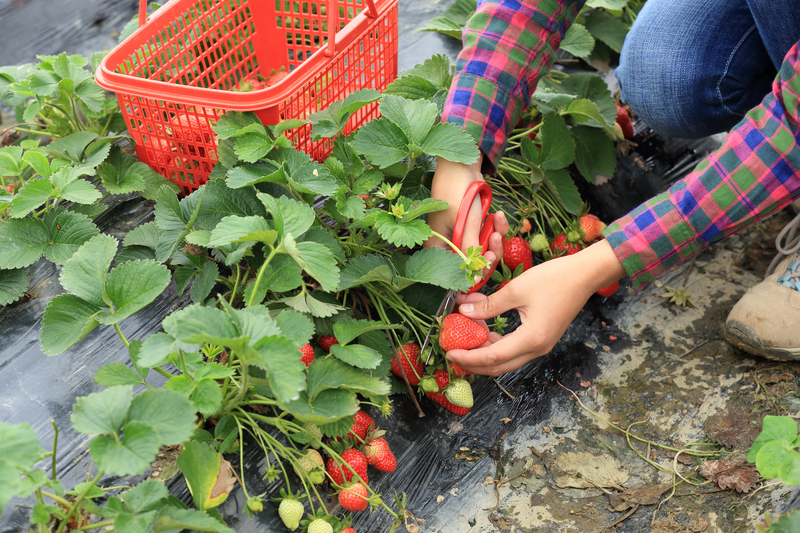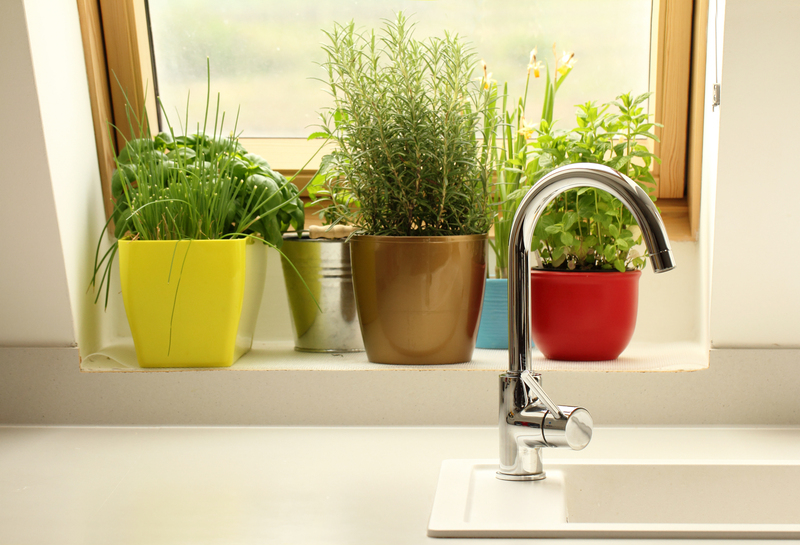A Simple Guide to Crafting a Permissive Garden for Kids
Posted on 13/06/2025
A Simple Guide to Crafting a Permissive Garden for Kids
Are you eager to cultivate both green thumbs and happy hearts in your backyard? Designing a permissive garden for kids is a joyful way to inspire curiosity, creativity, and a deep-rooted love for nature. In this comprehensive guide, you'll discover step-by-step instructions, essential tips, and creative ideas for creating a child-friendly outdoor space where exploration and learning blossom together.
What Is a Permissive Garden for Kids?
A permissive garden for kids is an outdoor environment intentionally designed to encourage freedom, exploration, and hands-on learning. Unlike typical structured gardens, permissive gardens embrace a relaxed approach, welcoming spontaneous play and interaction with the natural world. This nurturing space supports children's development, fosters independence, and even strengthens family bonds.
Key Characteristics of a Kid-Friendly Permissive Garden
- Safety-first design: No hazardous plants or materials.
- Open-ended play: Areas that double as imaginative playgrounds.
- Accessibility: Raised beds, reachable planters, and easy pathways.
- Rich sensory experiences: Varied textures, sounds, colors, and scents.
- Encouragement of ownership: Kids have their own plots or planters.
- Wildlife-friendly elements: Insect hotels, bird feeders, and small ponds.

Benefits of Permissive Gardening for Children
Permissive gardening provides innumerable benefits for children that go far beyond planting seeds. It's proven to boost physical, emotional, cognitive, and social development. Here's how:
Educational Growth
- Hands-on science: Observing life cycles, understanding weather, and learning about ecosystems.
- Fine and gross motor skills: Digging, seeding, watering, and harvesting.
- Math skills: Counting seeds, measuring plants, and planning layouts.
Health and Well-being
- Physical activity: Promotes fitness and reduces screen time.
- Stress reduction: Nature lowers anxiety and boosts mood.
- Healthy eating habits: Growing edible plants fosters a love for fruits and vegetables.
Social and Emotional Skills
- Collaboration: Working with siblings, friends, or parents strengthens bonds.
- Patience and responsibility: Watching plants grow teaches delayed gratification and care.
- Self-esteem: Success with gardening builds confidence.
Getting Started: Planning Your Permissive Garden
Before transforming your backyard, start with thoughtful planning. Consider space, sunlight, soil, and--most importantly--your children's interests. Encourage their ideas and allow them a say in what gets planted or built; this sense of ownership will make the garden for kids even more special.
Evaluating Your Space
- Assess available sunlight--most vegetables and flowers need at least 6 hours of sun.
- Check soil quality--opt for raised beds or planters if your soil is poor or compacted.
- Consider safety--keep sharp tools and chemicals locked away. Avoid plants with toxic leaves or berries.
Designing a Child-Centered Permissive Garden
The heart of a permissive garden lies in its design: welcoming, accessible, and irresistibly engaging. Let's break down the elements that make a garden inviting for children of all ages.
1. Create Adventure Zones
Children love discovery! Boldly divide your garden into interactive "zones" such as:
- Mud Kitchen: Recycled pots, pans, and utensils for pretend cooking.
- Willow Houses or Teepees: Living structures made from woven willow or bamboo.
- Secret Paths: Hidden trails lined with stepping stones or slices of wood.
- Bug Hotels: Stacked sticks, bamboo tubes, or drilled logs for observing insects.
2. Sensory Richness
- Texture: Mix in lamb's ear, ornamental grasses, and succulents for touch.
- Color: Plant vibrant blooms like sunflowers, marigolds, and nasturtiums.
- Scents: Include herbs such as mint, lavender, or lemon balm.
- Sound: Add rustling bamboo, wind chimes, or water features.
A multi-sensory environment is key for curious kids!
3. Accessibility and Inclusivity
- Include raised beds for smaller children and those with mobility challenges.
- Wide, even paths accommodate wheelbarrows and strollers.
- Place seating near play areas for relaxing or story time.
Choosing the Best Plants for a Permissive Children's Garden
Safety and resilience are vital. Choose non-toxic, hardy, and fast-growing species that can withstand rough handling and promote sensory exploration.
Kid-Proof and Kid-Friendly Plant Suggestions
- Sunflowers: Tall, dramatic, and easy to grow from seeds.
- Snapdragons: Fun "dragon mouth" blooms.
- Cherry tomatoes: Edible, sweet, and hands-on to harvest.
- Pumpkins: For autumn harvest fun and carving.
- Strawberries: Delicious snacks straight from the plant.
- Mint and basil: Fragrant herbs for rubbing and tasting.
*Let your children pick a few seeds to sow; watching daily growth is magical for young gardeners!*
The magic of a permissive garden for kids is in letting children lead their own discoveries. Here's how you can encourage ongoing play, creativity, and hands-on learning:
While the spirit is open-ended, some structure can help. Set a loose routine--perhaps watering each morning or checking for bugs after lunch. Celebrate progress, but avoid micromanaging; let kids make mistakes and learn from experience.
Fostering a wildlife-friendly children's garden not only supports biodiversity but also connects kids deeply with the rhythms of the natural world. Here's how to nurture little ecologists:
By observing and interacting with wildlife, children develop empathy and a sense of stewardship for the environment.
A permissive children's garden offers year-round adventures. Rotate activities and plantings to maintain interest and adapt to changing weather.
While less formal than typical landscapes, a kids' permissive garden still benefits from basic upkeep--much of which becomes a bonding activity. Regular tidying, inspecting, and refreshing parts of the garden together helps reinforce responsibility and teamwork.
Even the most inviting child-friendly gardens can present hurdles. Here are some quick solutions for common issues experienced by parents and caregivers:
A permissive garden for kids is more than just a space for plants; it's a living classroom and adventure zone. By nurturing their curiosity, creativity, and confidence, you're planting seeds that will yield benefits for years. So roll up your sleeves, get a little dirty, and watch your garden--and your children--thrive!
Remember, the most beautiful kid-friendly gardens are those filled with laughter, muddy hands, and a spirit of joyful exploration. Embrace mistakes, celebrate every sprout, and let your children's imaginations lead the way to a greener, happier future.
Fast-Growing Seeds for Kids' Instant Gratification
Encouraging Play and Learning in Your Kid-Friendly Garden
Provide Basic Tools and Resources
Promote Open-Ended Activities
Balance Freedom and Gentle Guidance
Wildlife and Nature Connections in a Permissive Garden
Permissive Garden Activities Throughout the Seasons
Spring
Summer
Autumn
Winter
Maintaining Your Permissive Garden for Kids

Tips for Success: Troubleshooting Common Challenges
Conclusion: Let Your Permissive Garden Grow Alongside Your Children

